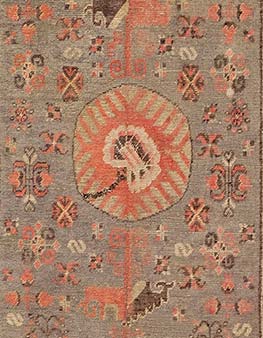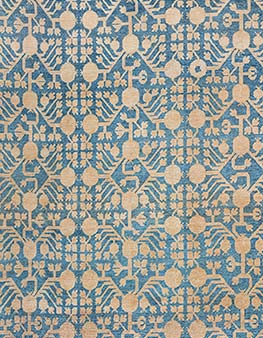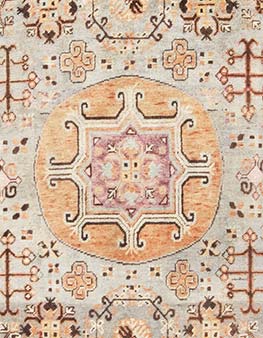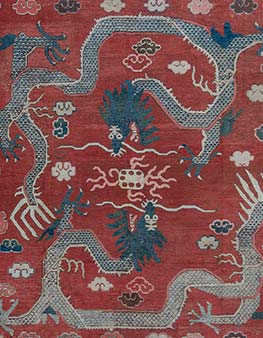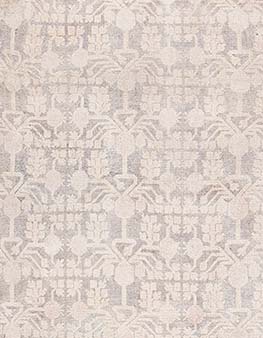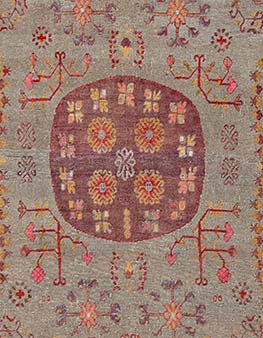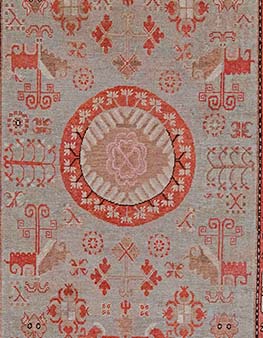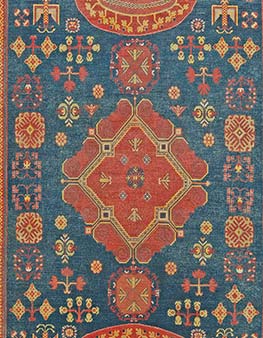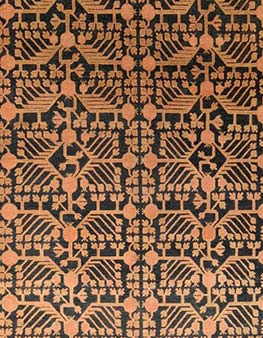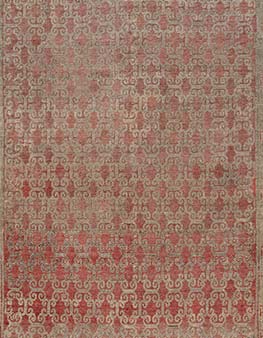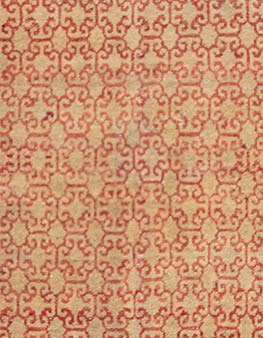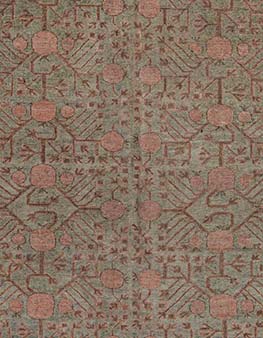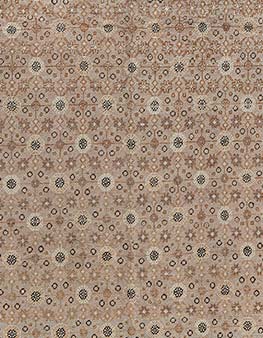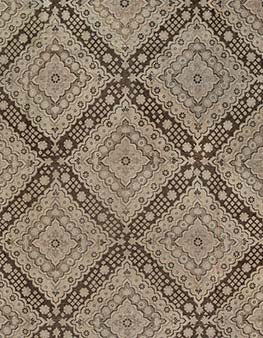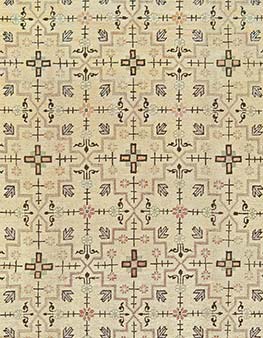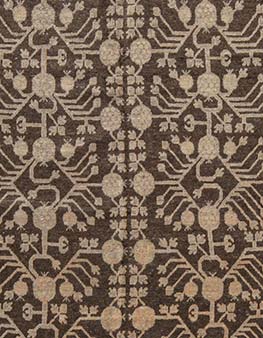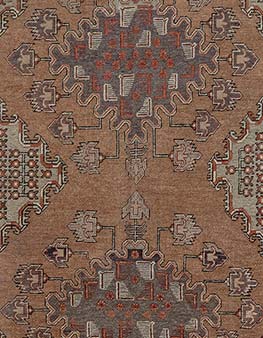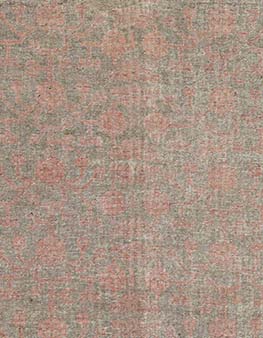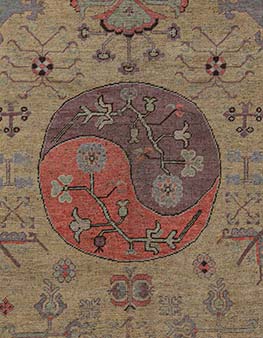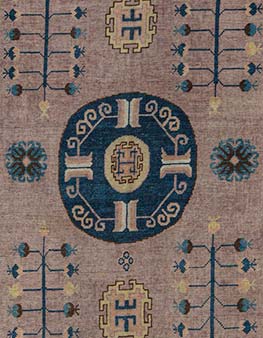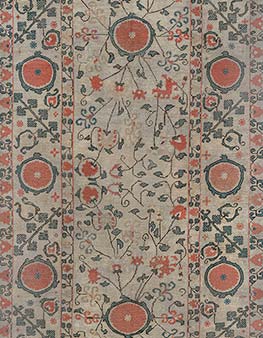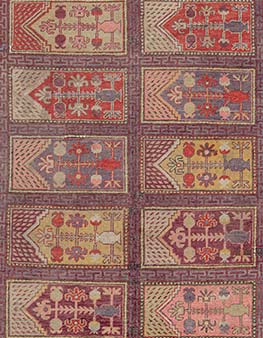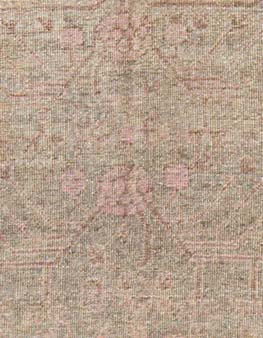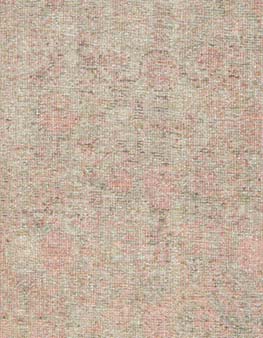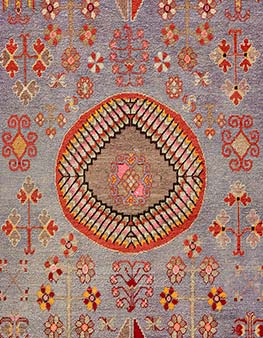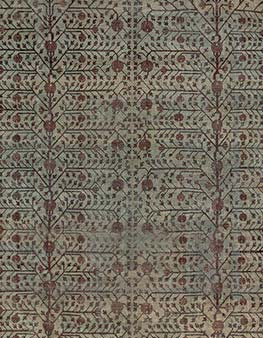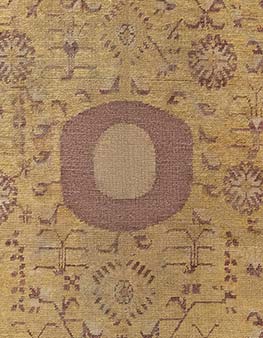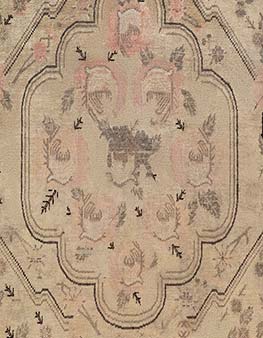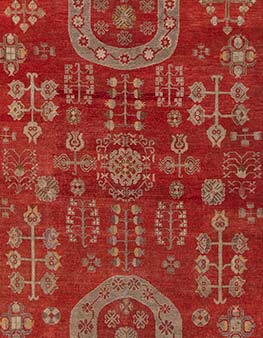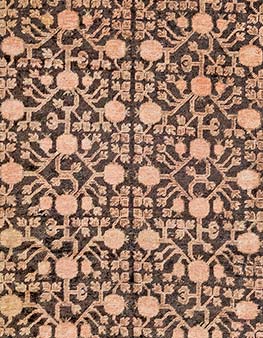Samarkand & Khotan Rugs
 To incorporate an antique into a contemporary interior takes flair and imagination. To assimilate an oriental antique into a western design demands daring and wit; and to integrate an exotic oriental antique into a familiar setting takes a designer of singular talent and with the lightest but surest of touches. The most superlative schemes are often those where such risks are undertaken boldly, where genres are successfully blended, and contrasting styles are used to accentuate diversity whilst still creating harmony. There is a remarkable dexterity to presenting an object of great age and with complex historical associations in an intrinsically up-to-date way and perhaps the greatest skill is in selecting an object d’art with a modern-day relevance.
To incorporate an antique into a contemporary interior takes flair and imagination. To assimilate an oriental antique into a western design demands daring and wit; and to integrate an exotic oriental antique into a familiar setting takes a designer of singular talent and with the lightest but surest of touches. The most superlative schemes are often those where such risks are undertaken boldly, where genres are successfully blended, and contrasting styles are used to accentuate diversity whilst still creating harmony. There is a remarkable dexterity to presenting an object of great age and with complex historical associations in an intrinsically up-to-date way and perhaps the greatest skill is in selecting an object d’art with a modern-day relevance.
In recent decades, Post-modernism has softened the tempered steel and molded glass angles of our brutal International landscape via the frenzied re-emergence of surface ornament, historical references in decorative forms, and non-orthogonal angles. Our latest response to the extreme complexity, lack of a clear central hierarchy, and contradiction of post-modernism, is the new sensibility of Globalization with a clear organizing principle, replacing visual ambiguity with diversity, and chaos with cohesion.
There is nothing bourgeois or patronizingly imperialistic about this twenty-first-century aesthetic of world culture: it is a celebratory globalization, not a suppressive homogenization. This free exchange of ideas, traditions and designs is firmly in the spirit of the ancient Silk Road, the elaborately interconnected series of ancient trade routes that extended from Southern Europe through Arabia, Egypt, Persia, India, and finally China.
Since 329 BC when Alexander the Great extended his empire into Central Asia, merchant traders and adventurers from East and West have followed these tortuous paths between precious oases. Such journeys have been undertaken at the cost of many lives, with the loss of thousands of pack animals and horses, despite armed escorts against bandits – all to satisfy the curiosity and splendor of the courts and to make or break the fortune of the speculators. Curios and rarities, acrobats and dwarfs, rubies and rock crystal, horses, slaves, silk, weapons, leather and furs, medicines and precious perfumes all made their precarious way across the great deserts girdled by inhospitable mountains between China and the Mediterranean.
During the Tang Period, fine Persian silks were exported to the East and West, disseminating figural Sassanian decorative motifs from Byzantium to Japan. Islamic patterns – geometric designs, interlacing, arabesques, and ornamental calligraphy, began to appear but the influence of the pre-Islamic Persian tradition has never been eliminated completely. The secret of papermaking was extracted by torture from two Chinese prisoners from the Battle of Talas in 751. This led to the first paper mill in the Islamic world being founded in Samarkand. The invention then spread to the rest of the Islamic world, and from there to Europe.
Inhabited since 700 BC, Samarkand is one of the oldest cities in the world. The once greatest metropolis in Central Asia has prospered due to its central location on the trade route between China and Europe. From the 6th to 13th centuries, it was variously under the control of the Western Turks, Arabs who converted the area to Islam, Persian Samanids, Kara-Khanid Turks, Seljuk Turks, Kara-Khitan, and Khorezmshah, before being sacked by the Mongols in 1220. In 1370, Timur the Lame, or Tamerlane, decided to make Samarkand the capital of his empire, which extended from India to Turkey. He enriched his favorite city by brutally sacking India, Persia, and Syria, capturing artisans and artists along with treasure.
In Samarkand, the greatest tile-makers, architects, gem-cutters, glassmakers, and painters were surrounded by a deep ditch and by walls of five miles in circumference. At the city center was a great domed market approached by roads from the city gates.
From the inhospitable steppes situated partially in the Chinese Republic and partially in the former USSR came Eastern Turks, Chinese, Mongols, and Kazaks with goods to barter. The nomadic weavers of eastern Turkestan were drawn to the magnificent bazaars of this prosperous trading post. In time an extraordinary entrepôt of Central Asian rugs and carpets developed.
The rugs of the oasis towns of East Turkestan are incomparable. These exotic weavings from the oases towns of Kashgar, Yarkand, and Khotan in the Chinese occupied Autonomous Region of Sikiang are collectively known as Samarkands. Typically, they are of long and relatively narrow format with simplistic and spacious designs rendered in glossy wool and sometimes in richly brocaded silk and metal-thread. The unusual rugs of Central Asia display themes from many cultures including China with fretwork borders, lotus blossoms, and cloud-bands; India with the swastika denoting infinity; Turkey with bold reciprocal borders and carnations and Persia with floral trellis work. Traces of Buddhist symbols abound with the use of red signifying the sun and the realm of the senses, Samsara, with the blue medallions or roundels being the spiritual as well as the night, and their roundness a representation of the moon. The common placement of three medallions may represent that of a Buddha and its flanking Bohisattvas on an altar. The use of a stylized cloud or archaic rams’ horn pattern in many borders is a combination of the mundane and the spiritual with the clouds being a celestial sign and the horns reflective of the earth and the powers of darkness. Perhaps the most evocative of all of the East Turkestan motifs is the pomegranate that signifies prosperity and fertility. Sassanian representations, Western mythologies, and Islamic geometries commingle within the Buddhist leaning Samarkand repertoire. Woven at the crossroads of many civilizations it is fitting that these rugs should employ such rich and varied symbolism. Samarkand is history’s definitive melting pot and its carpets are the ultimate expression of global multiculturalism.
The idiosyncratic coloration of East Turkestan weavings owes much to the influence of their Chinese and Turkish neighbors with lacquer red, Chinese yellow, and celadon being used to dramatic effect. At first glance, it is the simplicity and whimsical sparsity of decoration that appears to give these antique carpets such a fresh appeal but in essence, it is in their distinctive palette that sets them apart. With an almost sand-blasted, sun-bleached-bone absence of color accentuated by imaginative flashes of citrus, acid, and summer fruit they seem to radiate both great antiquity and immense modernity. Subtle shades of nature are enhanced by slivers of luminous chemical compounds with fragmented traces of bygone symbols partially eroded by time and temporal elements in a painterly, almost impressionistic manner. Beige flushed with soft bruises of lilac and aubergine, eau-de-nil and saffron, aluminum and lavender, copper verdigris, and slate. These are not the clumsy earth-shackled red and blue oriental rugs of a Victorian parlor. These tigers, peony blossoms, scepter-heads, and Greek key motifs are as visible as mere sepia and vellum yet the spackled textures, blistered varnish, and burnished metallic patinas of ruined temples, fallen idols, and the lime bleached skeletons of ancient adventurers seem to prevail.
With elemental means the weavings of the three oases articulate a fundamental concept of carpet design that is truly modern and dynamic: the field is infinite, focused on but not contained by the borders, the dramatic border holds itself in taut equilibrium.
Samarkand has been destroyed and rebuilt many times by many cultures. During the 16th century, the capital was moved to Bukhara and Samarkand declined until it was abandoned in the 18th century. The city came under Russian rule in 1868 and became the capital of the Uzbek SSR in 1925 before being replaced by Tashkent in 1930. Today Samarkand is the second-largest city in Uzbekistan and is mainly inhabited by Persian-speaking Tajiks.
Despite continuous political and economic upheaval, Samarkand continues to conjure up a mirage of romantic exoticism and has inspired many artists with appearances in the stories of One thousand and One Nights to the journals of Marco Polo written in 1298. As an icon of 20th-century literature it has featured in Edith Wharton’s The Age of Innocence; Angela Carter’s, The Kiss, and Iris Murdoch’s The Nice and The Good. The city is referenced throughout popular culture, from the 1945 Hollywood film classic It’s a Wonderful Life to Monty Python’s Flying Circus in 1969.
In 2001, UNESCO inscribed the 2750-year-old city on the World Heritage List as Samarkand – Crossroads of Cultures.
Samarkand: a fragile yet vital pulse, woven at the junction of several civilizations, testimony to the power of invention, even within the confines of age-old conventions. A serpentine line of beauty as singular as the Silk Road itself.






